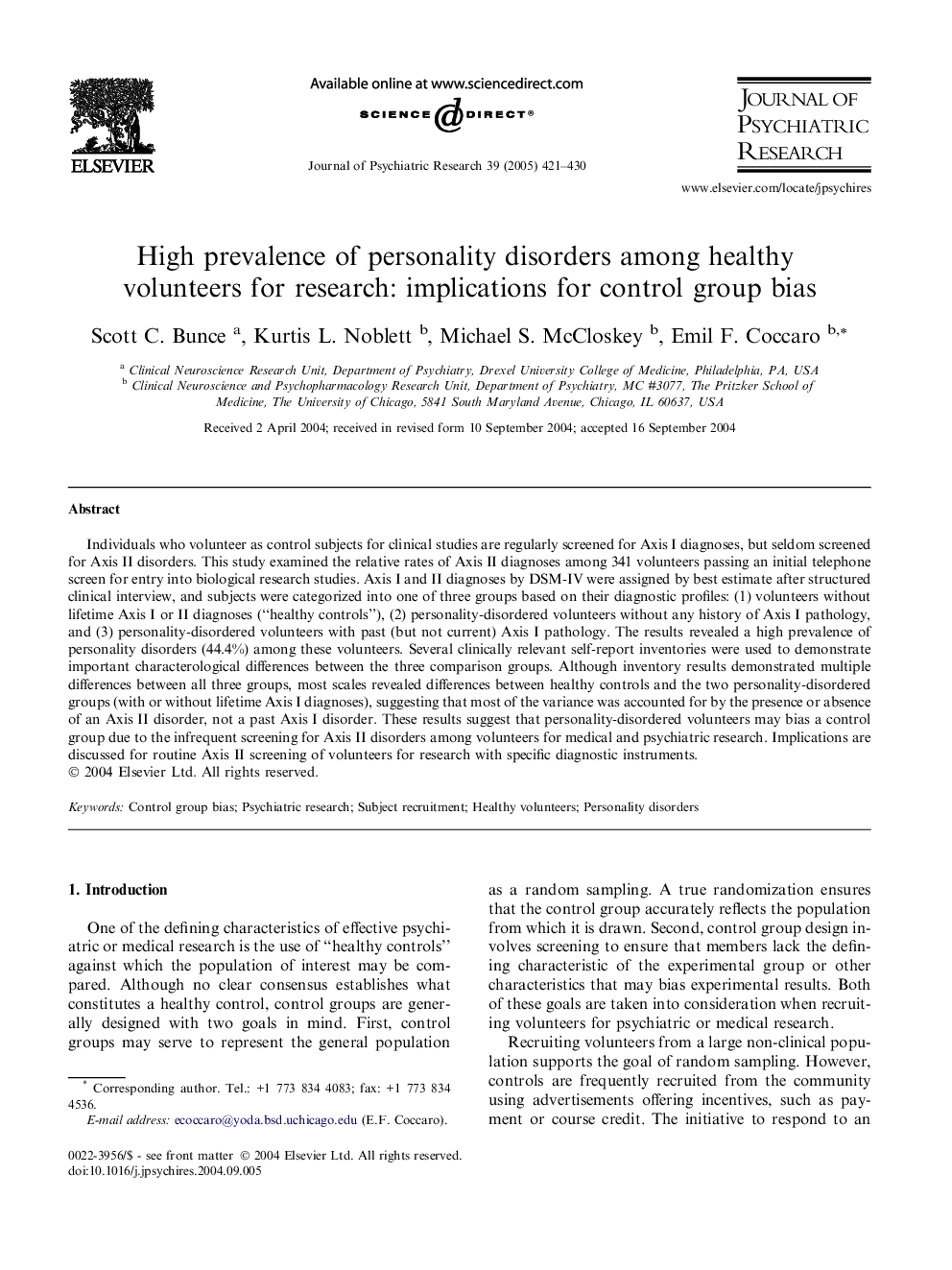| Article ID | Journal | Published Year | Pages | File Type |
|---|---|---|---|---|
| 10302005 | Journal of Psychiatric Research | 2005 | 10 Pages |
Abstract
Individuals who volunteer as control subjects for clinical studies are regularly screened for Axis I diagnoses, but seldom screened for Axis II disorders. This study examined the relative rates of Axis II diagnoses among 341 volunteers passing an initial telephone screen for entry into biological research studies. Axis I and II diagnoses by DSM-IV were assigned by best estimate after structured clinical interview, and subjects were categorized into one of three groups based on their diagnostic profiles: (1) volunteers without lifetime Axis I or II diagnoses (“healthy controls”), (2) personality-disordered volunteers without any history of Axis I pathology, and (3) personality-disordered volunteers with past (but not current) Axis I pathology. The results revealed a high prevalence of personality disorders (44.4%) among these volunteers. Several clinically relevant self-report inventories were used to demonstrate important characterological differences between the three comparison groups. Although inventory results demonstrated multiple differences between all three groups, most scales revealed differences between healthy controls and the two personality-disordered groups (with or without lifetime Axis I diagnoses), suggesting that most of the variance was accounted for by the presence or absence of an Axis II disorder, not a past Axis I disorder. These results suggest that personality-disordered volunteers may bias a control group due to the infrequent screening for Axis II disorders among volunteers for medical and psychiatric research. Implications are discussed for routine Axis II screening of volunteers for research with specific diagnostic instruments.
Related Topics
Life Sciences
Neuroscience
Biological Psychiatry
Authors
Scott C. Bunce, Kurtis L. Noblett, Michael S. McCloskey, Emil F. Coccaro,
